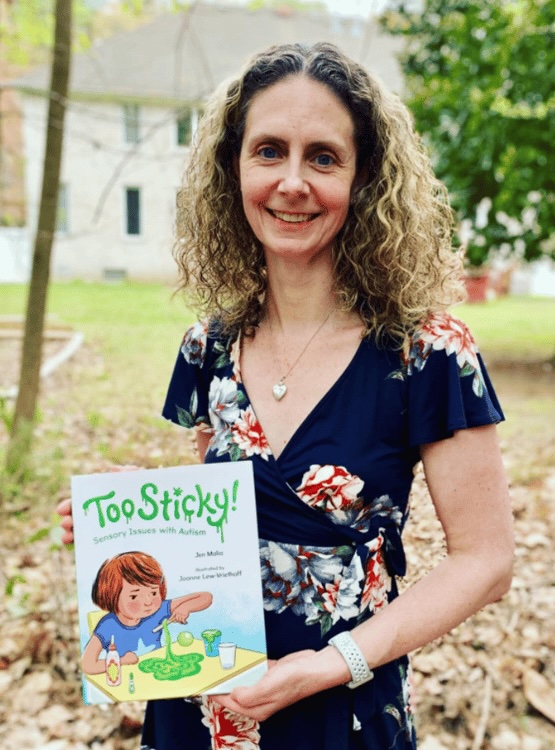Jen Malia speaks to students, parents, teachers, librarians, administrators, community leaders, and writers about children’s books, autism, and neurodiversity. An autistic mom of three autistic kids, she is the author of the children’s chapter book series The Infinity Rainbow Club and the picture book Too Sticky! Sensory Issues with Autism.
With over twenty-five years of teaching experience, Jen is currently Professor of English and Creative Writing Coordinator at Norfolk State University. She has written for or appeared on the New York Times, the Washington Post, NPR, Parents, Glamour, Woman’s Day, Self, and others.
Jen has a B.A. in English from Bowdoin College. At the University of Southern California, she earned her Ph.D. in English, M.S. in Teaching English to Speakers of Other Languages, and a black belt in Taekwondo. She is currently pursuing an MFA in Writing for Children and Young Adults at the Vermont College of Fine Arts.
Above all else, Jen is an explorer. She has traveled to twenty countries—and counting—around the globe. Some of the highlights include taking a hot air balloon safari in Kenya, hiking the rainforests in Costa Rica, exploring the ancient city of Petra in Jordan, and climbing a waterfall in Jamaica.
Jen lived in the United Arab Emirates for four years where she was an assistant professor of writing at the American University of Sharjah. She enjoyed going on desert safaris, snorkeling with sharks, visiting mosques, and hanging out with camels. Her oldest daughter, Noelle, was born in Dubai.
Jen’s family of five is neurodivergent. She was diagnosed with autism spectrum disorder (ASD) in her late thirties and her husband with ADHD in his mid-thirties. They have three neurodivergent kids who have different combinations of ASD, ADHD, OCD, dyslexia, and dysgraphia.
Jen writes the children’s books she wishes she had growing up as an undiagnosed autistic girl and the books she wants her neurodivergent kids and others like them to have now. She believes neurodivergent kids deserve to see themselves as the heroes and heroines of their own stories. While she writes children’s books especially for kids with different brains, she also wants neurotypical kids to read her books, so they have a better understanding of what it’s like to be a kid with a differently wired brain.















